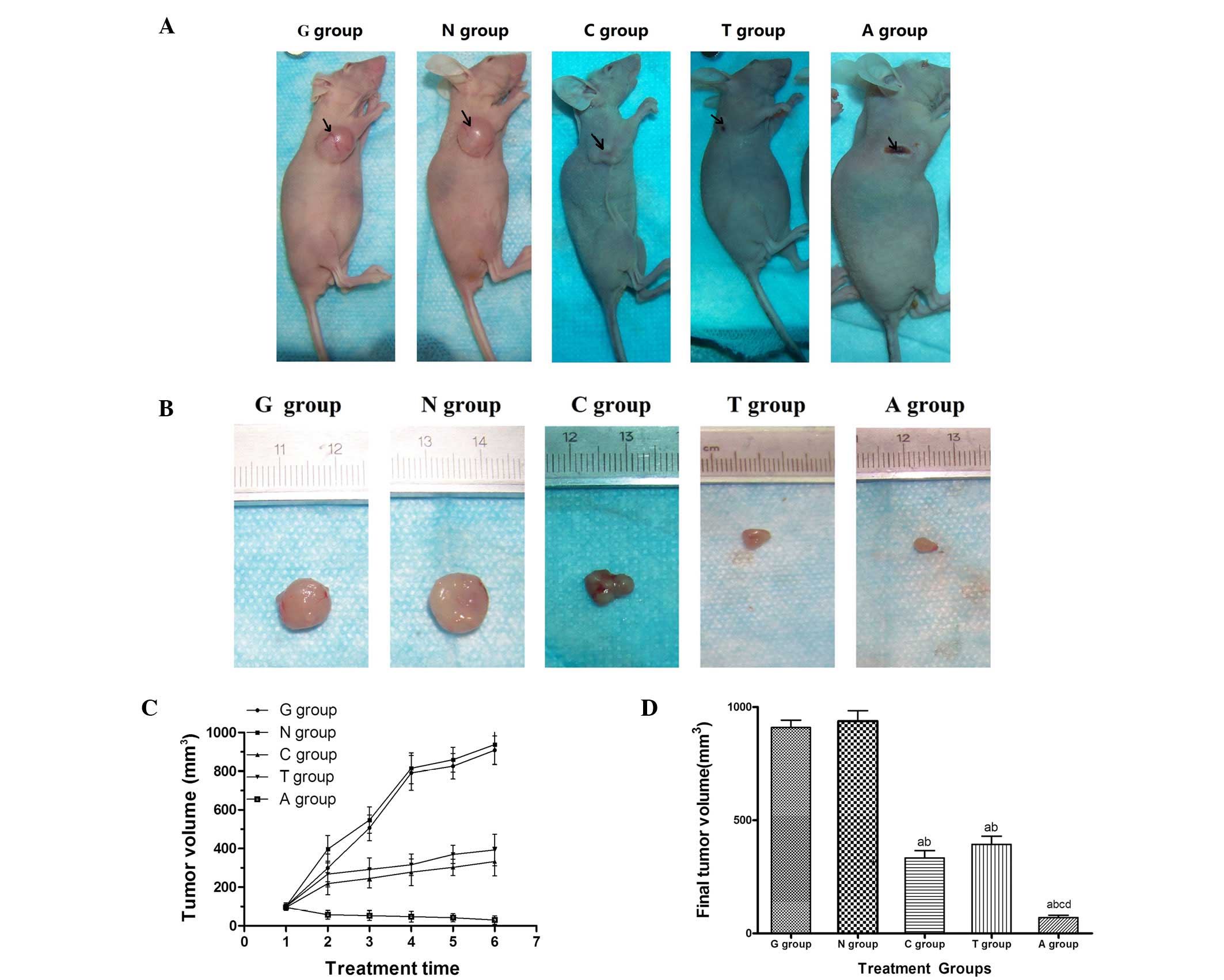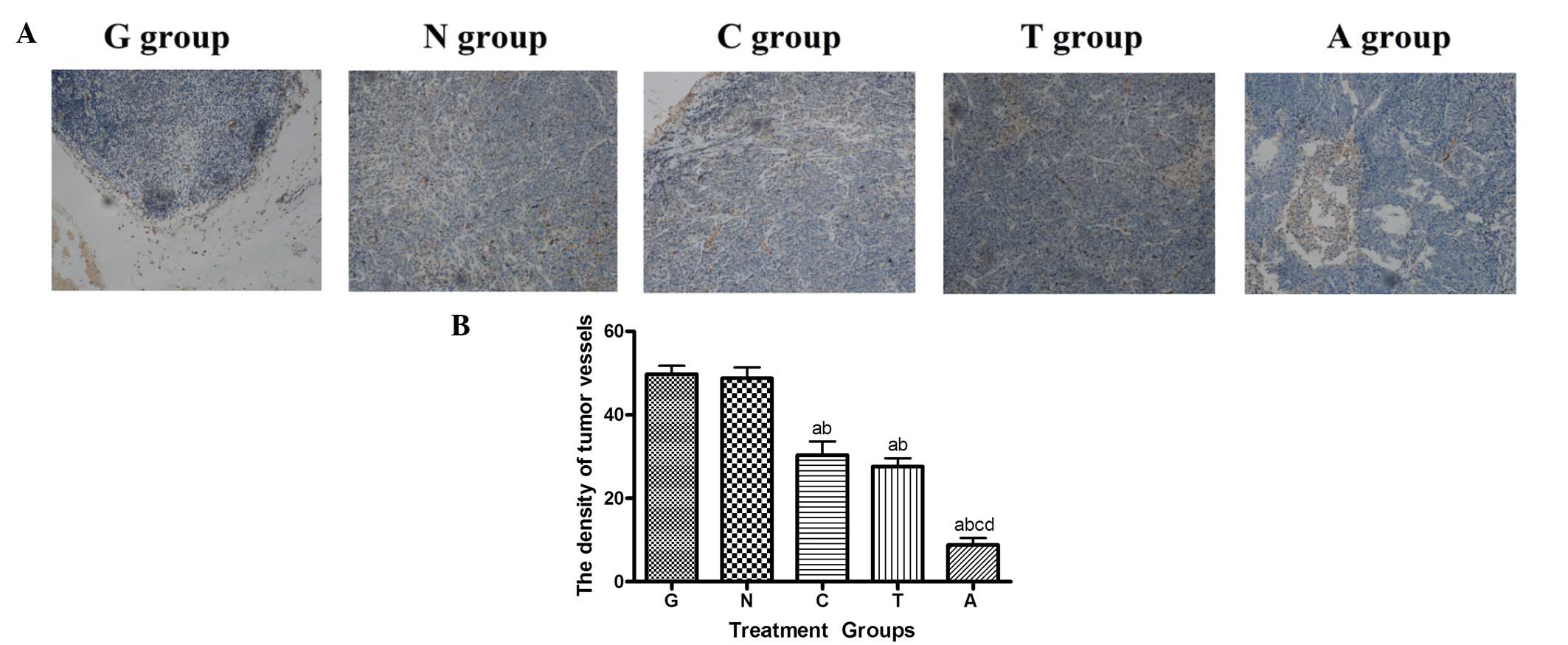|
1
|
National Cancer Institute at the National
Institutes of Health: Endometrial Cancer Home Page. http://seer.cancer.gov/statfacts/html/corp.html
Accessed November 10, 2010.
|
|
2
|
Jemal A, Bray F, Center MM, Ferlay J, Ward
E and Forman D: Global cancer statistics. CA Cancer J Clin.
61:69–90. 2011. View Article : Google Scholar
|
|
3
|
Myatt SS, Wang J, Monteiro LJ, Christian
M, Ho KK, Fusi L, Dina RE, Brosens JJ, Ghaem-Maghami S and Lam EW:
Definition of microRNAs that repress expression of the tumor
suppressor gene FOXO1 in endometrial cancer. Cancer Res.
70:367–377. 2010. View Article : Google Scholar : PubMed/NCBI
|
|
4
|
Ray M and Fleming G: Management of
advanced-stage and recurrent endometrial cancer. Semin Oncol.
36:145–154. 2009. View Article : Google Scholar : PubMed/NCBI
|
|
5
|
Poon RT, Lau CP, Ho JW, Yu WC, Fan ST and
Wong J: Tissue factor expression correlates with tumor angiogenesis
and invasiveness in human hepatocellular carcinoma. Clin Cancer
Res. 9:5339–5345. 2003.PubMed/NCBI
|
|
6
|
Carmeliet P: Angiogenesis in life, disease
and medicine. Nature. 438:932–936. 2005. View Article : Google Scholar : PubMed/NCBI
|
|
7
|
Sistla A, Kertelj A and Shenoy N:
Development of an intravenous formulation of SU010382 (prodrug of
SU5416, an anti-angiogenesis agent). PDA J Pharm Sci Technol.
62:200–210. 2008.PubMed/NCBI
|
|
8
|
Griffioen AW: Anti-angiogenesis: making
the tumor vulnerable to the immune system. Cancer Immunol
Immunother. 57:1553–1558. 2008. View Article : Google Scholar : PubMed/NCBI
|
|
9
|
Kimura Y, Sumiyoshi M and Baba K:
Anti-tumor actions of major component 3′-O-acetylhamaudol of
Angelica japonica roots through dual actions,
anti-angiogenesis and intestinal intraepithelial lymphocyte
activation. Cancer Lett. 265:84–97. 2008.PubMed/NCBI
|
|
10
|
Schmittgen TD and Livak KJ: Analyzing
real-time PCR data by the comparative C(T) method. Nat Protoc.
3:1101–1108. 2008. View Article : Google Scholar : PubMed/NCBI
|
|
11
|
Weidner N: Current pathologic methods for
measuring intratumoral microvessel density within breast carcinoma
and other solid tumors. Breast Cancer Res Treat. 36:169–180. 1995.
View Article : Google Scholar
|
|
12
|
Klauber N, Rohan RM, Flynn E and D’Amato
RJ: Critical components of the female reproductive pathway are
suppressed by the angiogenesis inhibitor AGM-1470. Nat Med.
3:443–446. 1997. View Article : Google Scholar : PubMed/NCBI
|
|
13
|
Yamaguchi R, Yano H, Nakashima Y,
Ogasawara S, Higaki K, Akiba J, Hicklin DJ and Kojiro M: Expression
and localization of vascular endothelial growth factor receptors in
human hepatocellular carcinoma and non-HCC tissues. Oncol Rep.
7:725–729. 2000.PubMed/NCBI
|
|
14
|
Miller K, Wang M, Gralow J, Dickler M,
Cobleigh M, Perez EA, Shenkier T, Cella D and Davidson NE:
Paclitaxel plus bevacizumab versus paclitaxel alone for metastatic
breast cancer. N Engl J Med. 357:2666–2676. 2007. View Article : Google Scholar : PubMed/NCBI
|
|
15
|
Gerber HP and Ferrara N: Pharmacology and
pharmacodynamics of bevacizumab as monotherapy or in combination
with cytotoxic therapy in preclinicals studies. Cancer Res.
65:671–680. 2005.PubMed/NCBI
|
|
16
|
Ferrara N and Kerbel RS: Angiogenesis as a
therapeutic target. Nature. 438:967–974. 2005. View Article : Google Scholar : PubMed/NCBI
|
|
17
|
Sandler A, Gray R, Perry MC, Brahmer J,
Schiller JH, Dowlati A, Lilenbaum R and Johnson DH:
Paclitaxel-carboplatin alone or with bevacizumab for non-small-cell
lung cancer. N Engl J Med. 355:2542–2550. 2006. View Article : Google Scholar : PubMed/NCBI
|
|
18
|
Sugimachi K, Tanaka S, Taguchi K, Aishima
S, Shimada M and Tsuneyoshi M: Angiopoietin switching regulates
angiogenesis and progression of human hepatocellular carcinoma. J
Clin Pathol. 56:854–860. 2003. View Article : Google Scholar : PubMed/NCBI
|
|
19
|
Hu B, Guo P, Fang Q, Tao HQ, Wang D,
Nagane M, Huang HJ, Gunji Y, Nishikawa R, Alitalo K, Cavenee WK and
Cheng SY: Angiopoietin-2 induces human glioma invasion through the
activation of matrix metalloprotease-2. Proc Natl Acad Sci USA.
100:8904–8909. 2003. View Article : Google Scholar : PubMed/NCBI
|
|
20
|
Yang H, Yang K, Hu JK, Tang H, Zhang B,
Chen ZX, Wang YJ and Chen JP: Eukaryotic expression of
extracellular ligand binding domains of murine Tie-2 and its
anti-angiogenesis effect in SGC-7901 cell lines. J Gastroenterol
Hepatol. 25:345–351. 2010. View Article : Google Scholar : PubMed/NCBI
|
|
21
|
Dumont DJ, Yamaguchi TP, Conlon RA,
Rossant J and Breitman ML: tek, a novel tyrosine kinase gene
located on mouse chromosome 4, is expressed in endothelial cells
and their presumptive precursors. Oncogene. 7:1471–1480.
1992.PubMed/NCBI
|
|
22
|
Sato TN, Tozawa Y, Deutsch U,
Wolburg-Buchholz K, Fujiwara Y, Gendron-Maguire M, Gridley T,
Wolburg H, Risau W and Qin Y: Distinct roles of the receptor
tyrosine kinases Tie-1 and Tie-2 in blood vessel formation. Nature.
376:70–74. 1995. View
Article : Google Scholar : PubMed/NCBI
|
|
23
|
Suri C, Jones PF, Patan S, Bartunkova S,
Maisonpierre PC, Davis S, Sato TN and Yancopoulos GD: Requisite
role of angiopoietin-1, a ligand for the TIE2 receptor, during
embryonic angiogenesis. Cell. 87:1171–1180. 1996. View Article : Google Scholar : PubMed/NCBI
|
|
24
|
Eklund L and Olsen BR: Tie receptors and
their angiopoietin ligands are context-depedent regulators of
vascular remodeling. Exp Cell Res. 312:630–641. 2006. View Article : Google Scholar : PubMed/NCBI
|
|
25
|
Mori Y, Sahara H, Matsumoto K, Takahashi
N, Yamazaki T, Ohta K, Aoki S, Miura M, Sugawara F, Sakaguchi K and
Sato N: Downregulation of Tie2 gene by a novel antitumor
sulfolipid, 3′-sulfoquinovosyl-1′-monoacylglycerol, targeting
angiogenesis. Cancer Sci. 99:1063–1070. 2008.PubMed/NCBI
|
|
26
|
Mai J, Song S, Rui M, Liu D, Ding Q, Peng
J and Xu Y: A synthetic peptide mediated active targeting of
cisplatin liposomes to Tie2 expressing cells. J Control Release.
139:174–181. 2009. View Article : Google Scholar : PubMed/NCBI
|
|
27
|
Yamakawa D, Kidoya H, Sakimoto S, Jia W
and Takakura N: 2-Methoxycinnamaldehyde inhibits tumor angiogenesis
by suppressing Tie2 activation. Biochem Biophys Res Commun.
415:174–180. 2011. View Article : Google Scholar : PubMed/NCBI
|
|
28
|
Tournaire R, Simon MP, le Noble F,
Eichmann A, England P and Pouysségur J: A short synthetic peptide
inhibits signal transduction, migration and angiogenesis mediated
by Tie2 receptor. EMBO Rep. 5:262–267. 2004. View Article : Google Scholar : PubMed/NCBI
|
|
29
|
Maschek G, Savaraj N, Priebe W,
Braunschweiger P, Hamilton K, Tidmarsh GF, De Young LR and Lampidis
TJ: 2-deoxy-D-glucose increases the efficacy of adriamycin and
paclitaxel in human osteosarcoma and non-small cell lung cancers
in vivo. Cancer Res. 64:31–34. 2004. View Article : Google Scholar : PubMed/NCBI
|
|
30
|
Sennino B, Falcón BL, McCauley D, Le T,
McCauley T, Kurz JC, Haskell A, Epstein DM and McDonald DM:
Sequential loss of tumor vessel pericytes and endothelial cells
after inhibition of platelet-derived growth factor B by selective
aptamer AX102. Cancer Res. 67:7358–7367. 2007. View Article : Google Scholar : PubMed/NCBI
|
|
31
|
Jain RK: Normalization of tumor
vasculature: an emerging concept in antiangiogenic therapy.
Science. 307:58–62. 2005. View Article : Google Scholar : PubMed/NCBI
|
|
32
|
Devroe E and Silver PA: Therapeutic
potential of retroviral RNAi vectors. Expert Opin Biol Ther.
4:319–327. 2004. View Article : Google Scholar : PubMed/NCBI
|
|
33
|
Behlke MA: Chemical modification of siRNAs
for in vivo use. Oligonucleotides. 18:305–319. 2008.
View Article : Google Scholar : PubMed/NCBI
|












